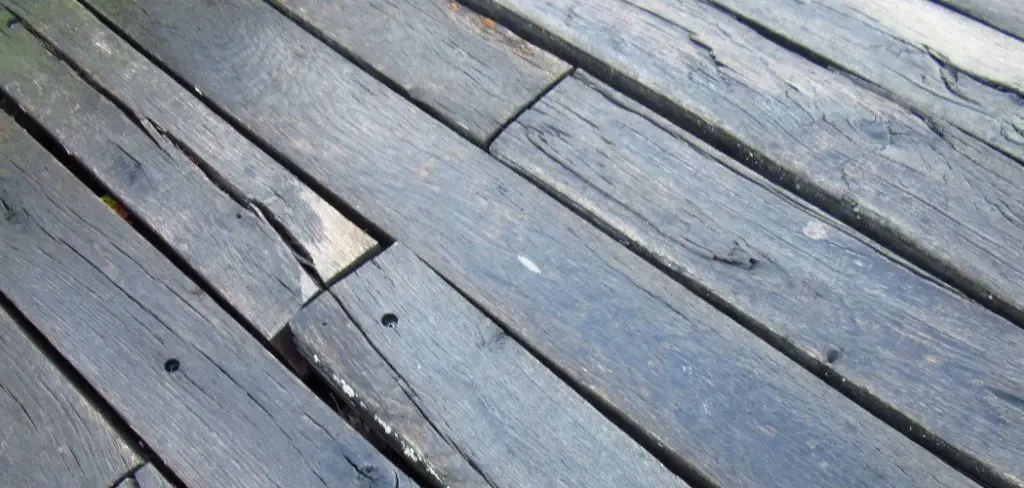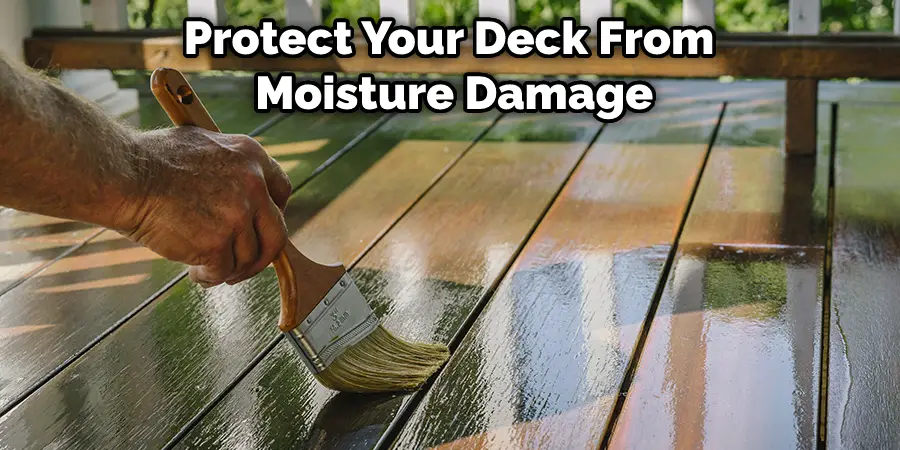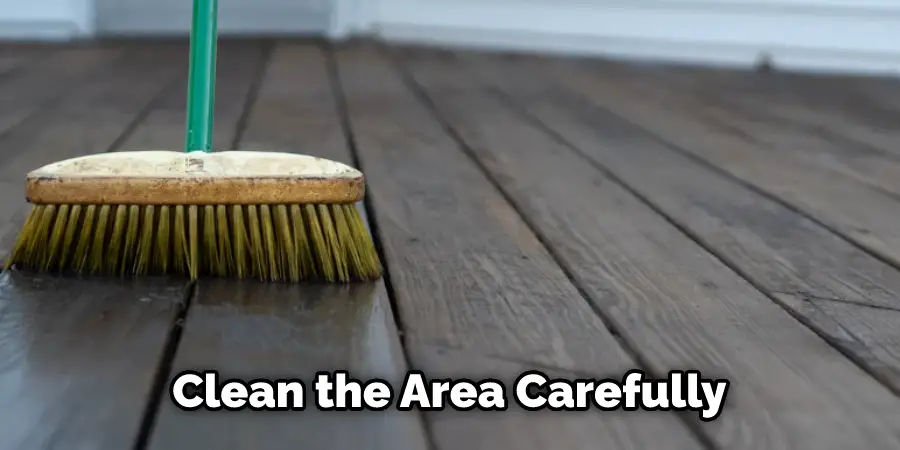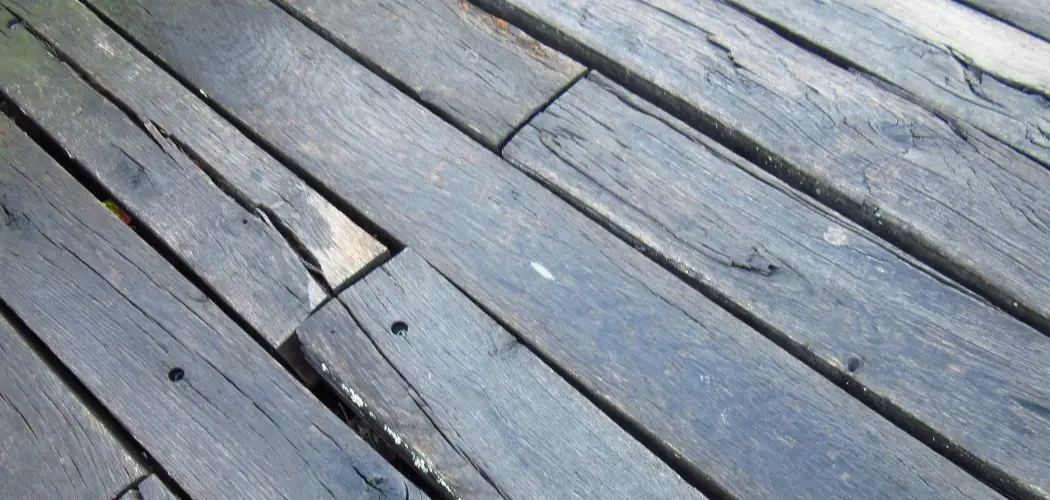Staining cracks in your deck can be an excellent way to give it a facelift and make it look as good as new. Staining the cracks protects the wood from further damage caused by moisture and weathering, which can lead to rot and other issues. Additionally, staining will create a uniform look that will make your deck look great and stand out from the crowd. Of course, there are a few things to consider when staining cracks in your deck.

Staining cracks in your deck can greatly add visual appeal and value to your outdoor living space. Staining the cracks of your deck can help protect it from moisture, dirt, and other elements that can cause rotting and discoloration. It also provides an attractive finishing touch for the overall look of your deck. With the right materials, staining cracks in your deck is a straightforward process that can be completed quickly and easily. You can find step-by-step instructions on how to stain cracks in deck in this blog article.
Step-by-step Instructions for How to Stain Cracks in Deck
Step 1: Inspect the Deck
Look for any gaps or holes in the decking materials and any existing cracks. Make sure all these areas are clean and dry before moving on to the next step. Gather supplies such as a paintbrush, stain, and protective gloves. If needed, purchase a crack filler product to fill in any larger holes or gaps that may be present.
Step 2: Preparing the Deck
Take a moment to ensure that all debris, dirt, and other material is cleared away from the cracks. This will minimize any blemishes or discoloration after staining. If needed, use a putty knife to scrape away any excess build-up. Using a paintbrush, apply the stain to any cracks or holes in the decking material. Make sure you cover the entire area with an even coat of stain. Allow it to dry completely before applying another coat if desired.

Step 3: Use Crack Filler
If any cracks are too large or deep to be satisfied with the stain, you can use a crack filler product. This will help to ensure that your deck looks even and professional after staining. Follow the instructions on the packaging for proper application techniques. Once the crack filler has dried, it is time to apply a primer. This will help to ensure that your stain adheres properly and doesn’t peel or chip off over time. Use a paintbrush to spread the primer across the entire area evenly.
Step 4: Sand Down Areas
If there are any raised or rough areas, it is important to sand them down before staining. This will ensure that your stain looks even and professional when it dries. Use a sandpaper block or similar tool for this step. Once the primer has dried, apply a second coat of stain to the area. Make sure to spread the stain across the entire area evenly. Let it dry completely before adding another coat if desired.
Step 5: Seal the Area
Once all of the coats of stain are dry, use a clear sealant or waterproofing product to protect your deck from moisture damage. This will help extend your deck’s life and ensure it looks its best. After sealing, let the area dry completely before walking on it or placing any furniture or other items on top of it. This will help to ensure that no damage is done to the decking material.

Step 6: Enjoy Your Newly Stained Deck
Once everything is dry, you can enjoy your newly stained deck! Keep in mind that the stain may need to be reapplied every few years depending on levels of exposure and wear. Following these steps, you can easily stain any cracks or holes in your decking material for a beautiful finish.
Safety Tips for How to Stain Cracks in Deck
- Make sure to wear safety goggles and gloves when staining cracks in your deck.
- Always follow the manufacturer’s instructions for applying the stain, as different products require different techniques to be used correctly.
- Read carefully the label of the product you are using and pay attention to any warning signs it might contain.
- Ensure that the area you are working in is well-ventilated, and if necessary, wear a respirator mask.
- If painting or staining indoors, be sure to use drop cloths to protect furniture and flooring from stains and drips.
- Avoid staining on hot days as the heat will cause your stain to dry too quickly and not be able to penetrate the wood properly.
- As a last step, always sweep off any dust or debris from the surface of your deck before applying the stain. This will ensure that the stain sticks better and provides an even finish.
Following these safety tips for how to stain cracks in your deck will help you complete the project quickly and safely. With proper preparation and protection, your deck will look beautiful again in no time.
How Often Should You Reapply the Stain on Your Deck’s Cracks?
Staining your deck is a great way to protect it from the elements. But how often should you reapply the stain on your deck’s cracks to keep it looking its best? The answer depends mainly on the type of wood that your deck is made from, as well as the climate and environment where your deck is located.
You should reapply the stain every two to three years for decks made of hardwoods, such as oak and mahogany. If your deck is made from pressure-treated wood or softwoods like pine and cedar, you should reapply the stain every year. This may vary depending on your local climate and your deck’s exposure to rain, snow, and sunlight. It’s also important to inspect your deck annually for signs of wear or damage, as this will help you decide when it’s time to reapply the stain.
How Can You Avoid Creating Air Bubbles in the Finish When You’re Sealing Your Deck’s Cracks?
When you’re staining your deck’s cracks, it is important to take extra care and caution when sealing them. Air bubbles can easily form in the finish if not done correctly, detracting from the overall look of your deck. To avoid creating air bubbles while sealing cracks in a deck, follow these steps:

- Clean the area carefully with a vacuum or cloth to remove any dust and debris that could create air bubbles.
- Apply the stain using a brush, roller, or sprayer in long strokes to ensure even coverage.
- Use a damp rag to smooth out any air bubbles that may have formed before they harden and become visible.
- Allow the stain to dry completely before sealing it with a sealant or varnish.
- Apply another thin coat of sealant or varnish and use a damp cloth to smooth out any air bubbles that may have formed while drying.
By following these steps, you should be able to avoid air bubbles when staining your deck’s cracks and achieve a smooth and professional-looking finish. With a little patience and attention to detail, you can have a beautiful and long-lasting deck in no time!
How Can You Protect Your Deck From Further Cracking or Damage Once You’re Stained and Sealed the Cracks?
Once you have stained and sealed the cracks on your deck, there are a few things you can do to help prevent further cracking or damage. The first is to clean your deck regularly. Dirt and debris can build up in the cracks over time, causing further splitting and wear. By hosing off your deck every so often and scrubbing it down with a power washer, you can help prevent further splitting.
Another way to protect your deck from damage is to apply a sealer after the staining process. This will not only protect the wood from moisture, but it will also add an extra layer of protection for cracks you have already filled and sealed. Ensure to carefully follow the manufacturer’s instructions when applying a sealer, as the incorrect application can lead to damage.
How Can You Best Maintain Your Deck to Prevent Cracking or Damage in the Future?
The best way to maintain your deck and prevent cracks or damage in the future is to inspect it regularly for signs of wear and tear. Any cracked boards should be replaced as soon as possible. Additionally, it’s important to keep the surface of your deck clean and free from debris which can cause damage over time. This includes furniture, plants, and other items.
Additionally, make sure to regularly seal or re-stain your deck to protect it from moisture and sun damage. Finally, pay attention to your area’s weather conditions and ensure that you are taking steps to protect your deck during harsh winter. This can include adding a tarp over your deck’s surface or a water-resistant sealer.

Conclusion
In conclusion, staining cracks in a deck isn’t as daunting a task as it may seem. With the proper supplies, preparation, and stain application, you can easily create a beautiful deck that will bring years of enjoyment and pleasure.
Remember to take your time with prepping the surface for staining, use the right tools for applying the stain and always allow ample time for the stain to dry before use. I hope reading this post has helped you learn how to stain cracks in deck. Make sure the safety precautions are carried out in the order listed.


